Peruvian Breads (2/3)
We're on Facebook too!
English version.
Encuentre la versión en español AQUÍ.
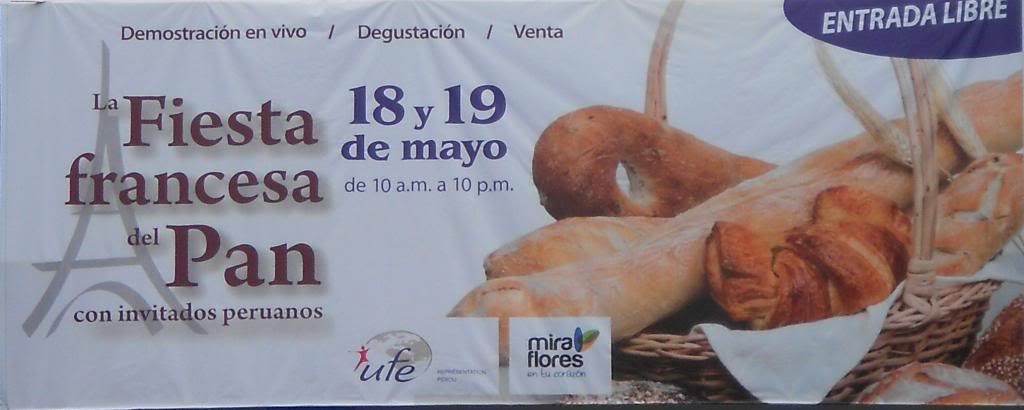
Map HERE
MYSKI TANTA

- What’s your name, please?
- Vides Michael Aylas Martínez.
- Vides, how does the Myski Tanta bakery start?
- Myski Tanta starts three years ago. I gave it that name because, in Quechua, it means ‘sweet bread’.
- And is your bread really sweet?
- ¡Of course! They’re all sweet.
- Sounds great. So what do you use for production, what are the ingredients in your bread?
- They have wheat flour. We work with barley flour, and also quinua flour. Kiwicha, kañiwa… lots of ingredients. We make the bread mainly with our Andean grains.
- And where are you from, exactly?
- We are from Jauja. Jauja - Junín.
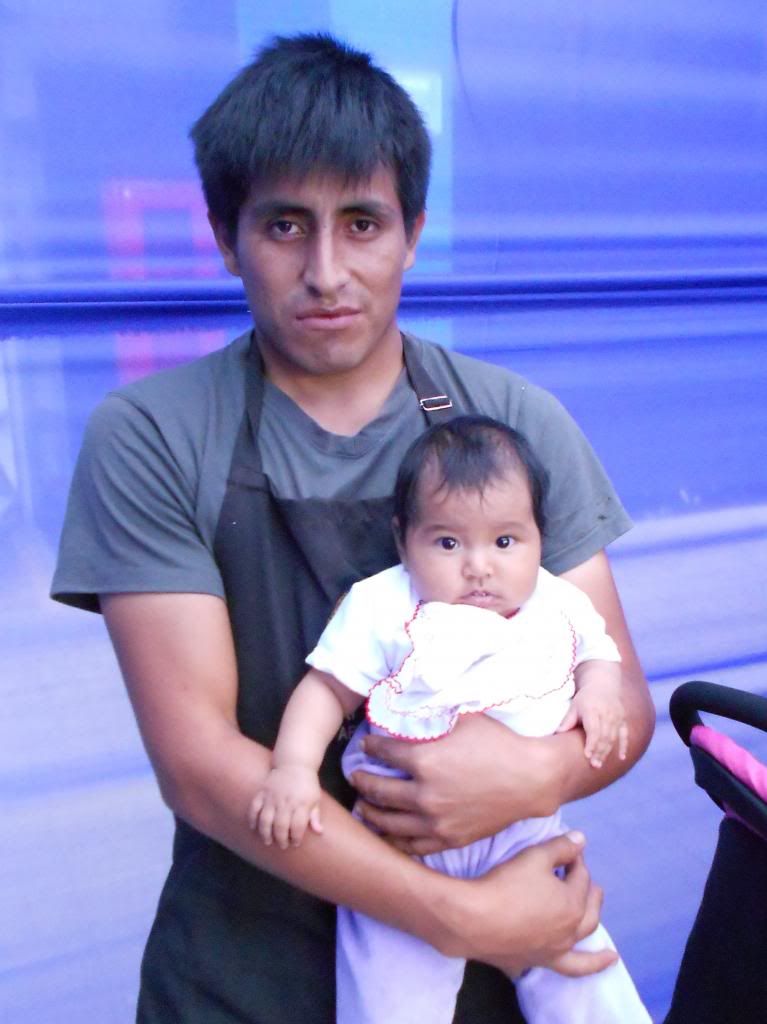
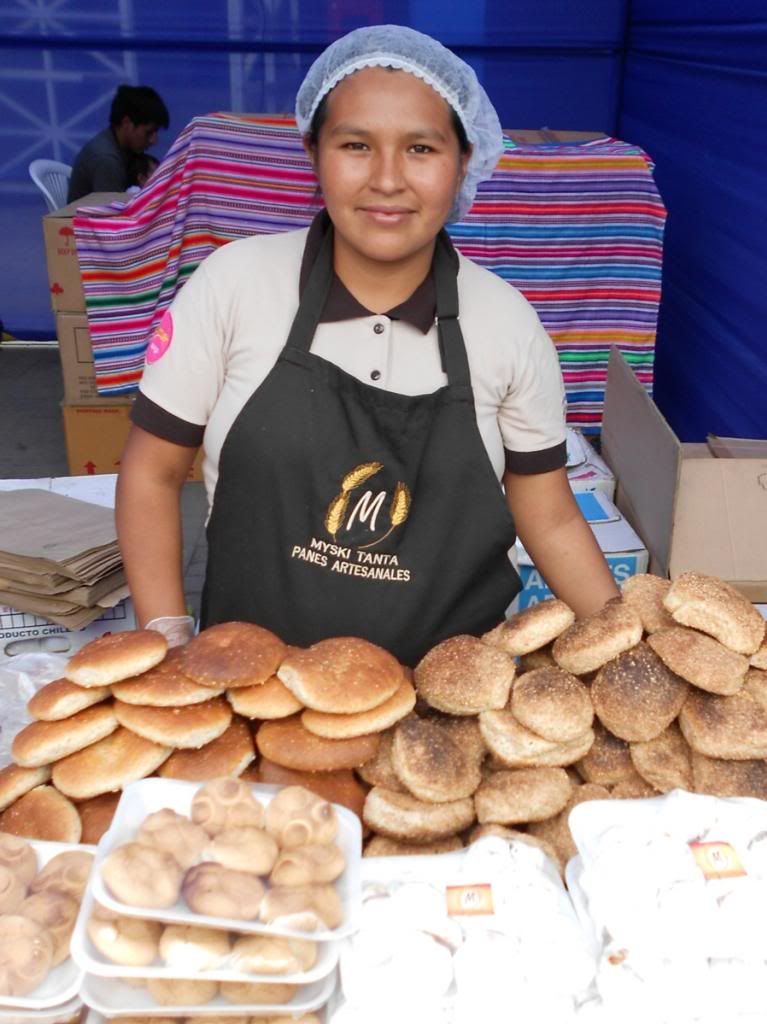
- What’s your star product, Vides?
- The ‘maicillo’. They are little biscuits made with corn flour, 100% corn flour.
- And how did you come to take part of this event?
- Well, I heard about it. So I sent my e-mail, and that was that.
- And what do you think so far?
- I think it’s cool that people show an interest in bread.
- Very well. An invitation for Sunday?
- I invite everybody, that they come to the Misky Tanta stand here; they’d find quinua bread, and barley bread… Lots of bread!
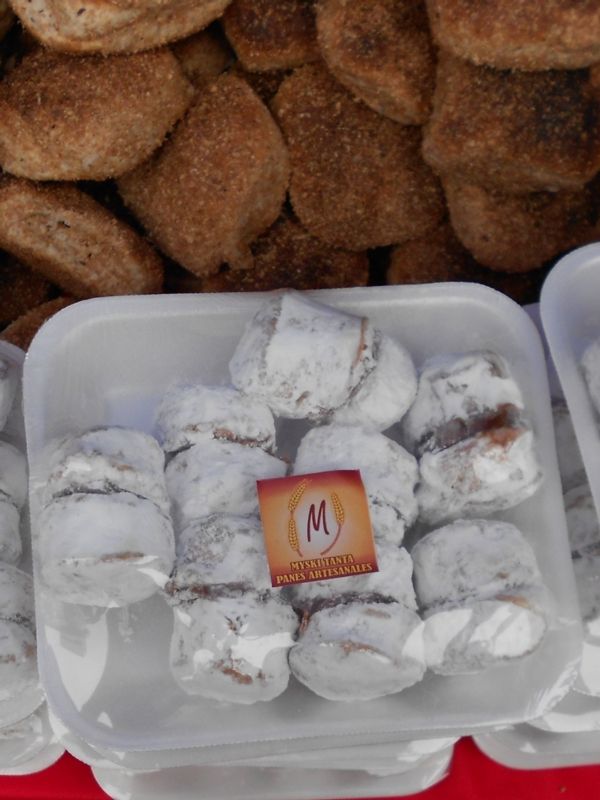
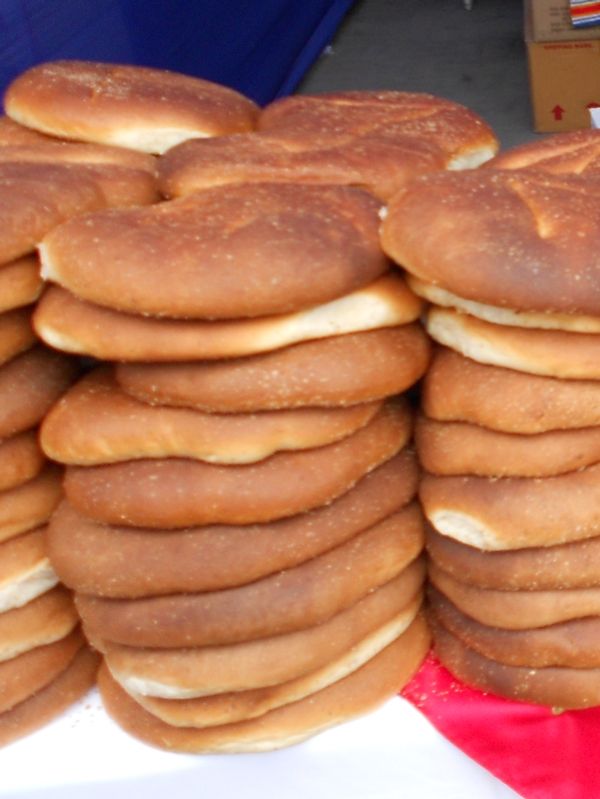
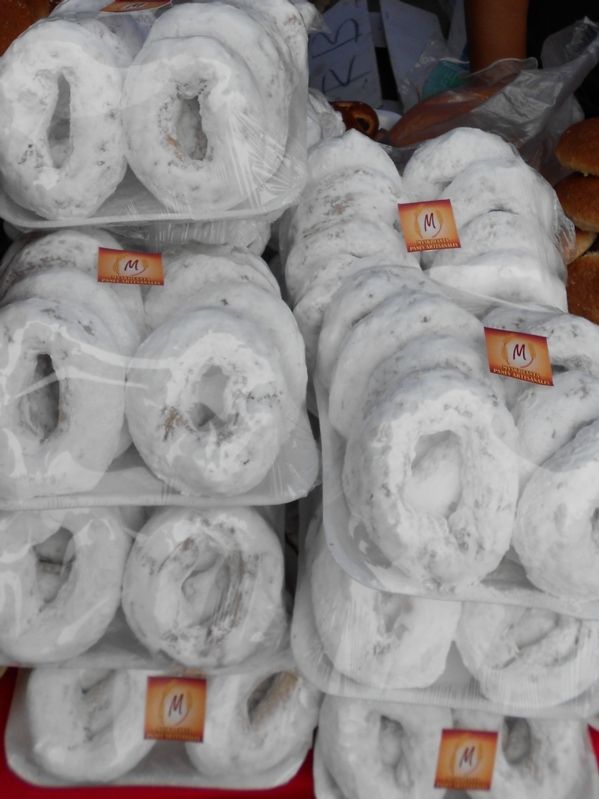
Click to enlarge.
CHACHAPOYAS BREAD

- All of you are representing…?
- I come from Chachapoyas, from the San Jose bakery.
- Ah, from Chachapoyas up north! I could tell from the hat.
- Yes, indeed. From the border with Ecuador.
- How did you get to be here, tell me.
- It was two days of travel. And we came with the bread from there, from my region.
- When did San Jose start?
- San José is already… since ’83! And it’s one of the emblematic bakeries because of its participation here in the capital city; we've been national champions since 2003, with our arracacha bread. And in 2004, too, with another bread: corn bread, which is not here this weekend.
Also, Mrs. María is well known, a distinguished bread baker at Mistura in four consecutive years. It’s just our first time at this particular event.
(a visitor came to greet Mrs. María and the others.)
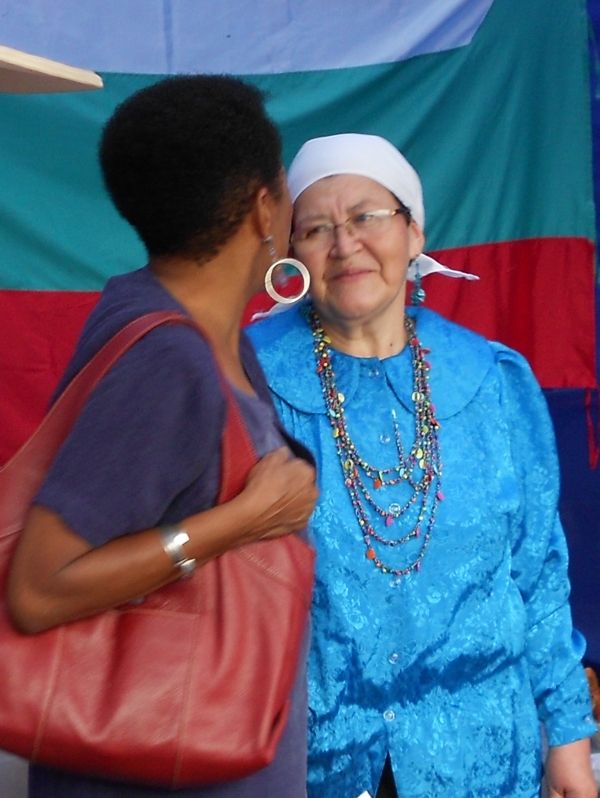
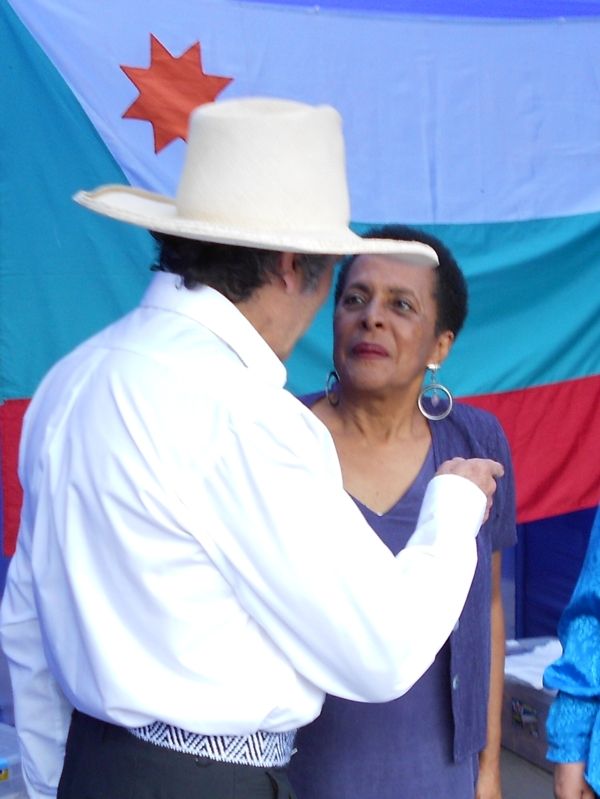
- I see you have interesting acquaintances.
- Well, it’s the bread business… I follow Mrs. María in this important work, because bread is a symbol of world nutrition. These events, these fairs, are very important because Peru is not a bit bread consumer - we don’t even reach the recommendation from the World Health Organization, which is 60 kg every year, per person. Instead, in Peru, it’s about 19 kg; we still need more bread on our tables.
Also, for us it’s an honor to be here.
- I see. Now, I have to ask. You mentioned that your arracacha bread was the winner in 2003. Tell me more about this bread.
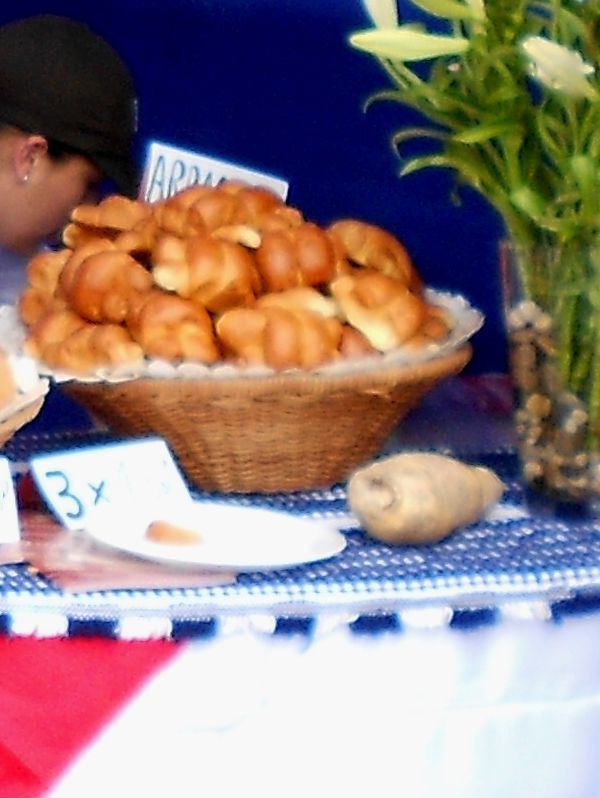
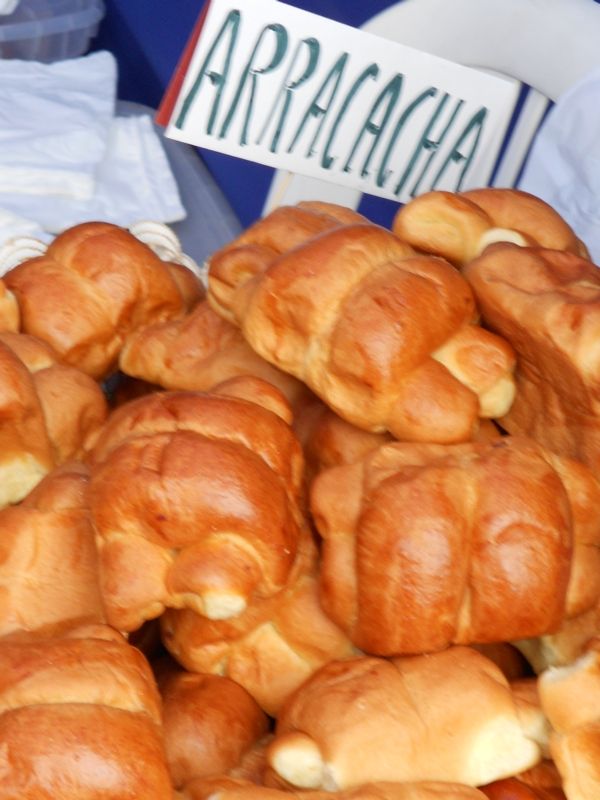
Click to enlarge.
- The arracacha is that root vegetable in the front, similar to the sweet potato; grows in the soil. We process it: we cook it - boil it, really. Once pre-cooked, we mix it with the flour, and that’s how the bread is made.
This time we are bringing five different breads. One is already gone - so quick! It was a whole wheat bread. There’s also the ‘semita’, which to me represents Peruvian bread. Why? Peru has many varieties of bread, but it occurs to me that when the Spaniards came to Perú, they wanted to eat food from their own land. And, look, the ‘semita’ has absolutely nothing to do with the Chacha culture - it must come from the Spaniards, and they were conquered by Turks, Arabs… Anyway, they had their own bread.
Nowadays, this is a commonplace bread in Chachapoyas; it can be found in markets, in bakeries. It’s not a bread that is prepared for a special celebration, not anymore. Before, yes, it was made to honor important guests, or for weddings. The ‘semita’ is a fine bread - or a ‘special bread’, as it’s called here in the Coast - because it’s a mixture of two doughs. That’s what makes it special.
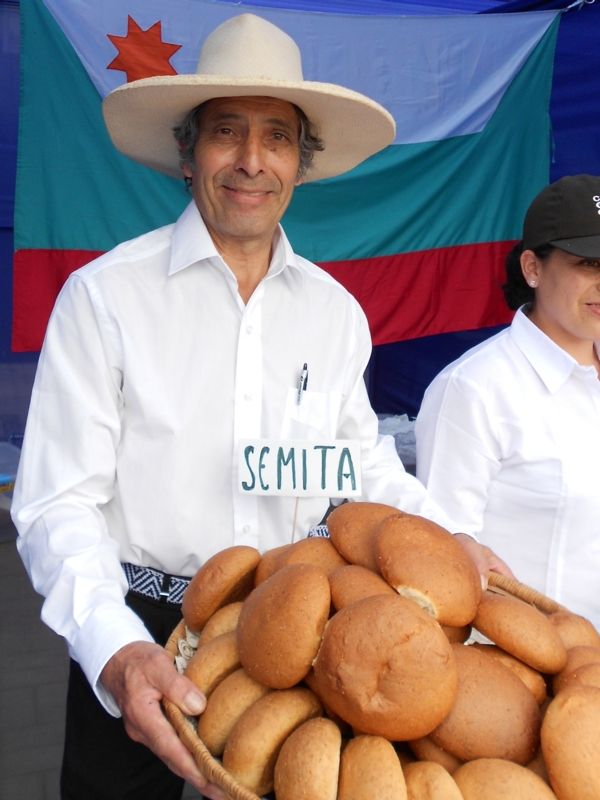
Click to enlarge.
- What kind of doughs?
- One is sweet, like sweet bread. And on top comes the wheat one. And that combination, those doughs, give their main characteristic to the ‘semita’ bread.
- Interesting. I’d never heard of it. Now, an invitation for Sunday?
- Well… Even more than the general public, I’d like to invite all fellow bread bakers. They should know about this event, and come here because ours is good stuff. And it’s good for them to know it all. Here, many of us have come from inside the country, and we need that Peru realizes what we have in our provinces. Lima is a good market for this, to make us known by everybody.
And to the others who are reading this, well, that they attend this fair. Come on Saturday and Sunday. We will show them, and they’ll be able to taste the products we have brought.
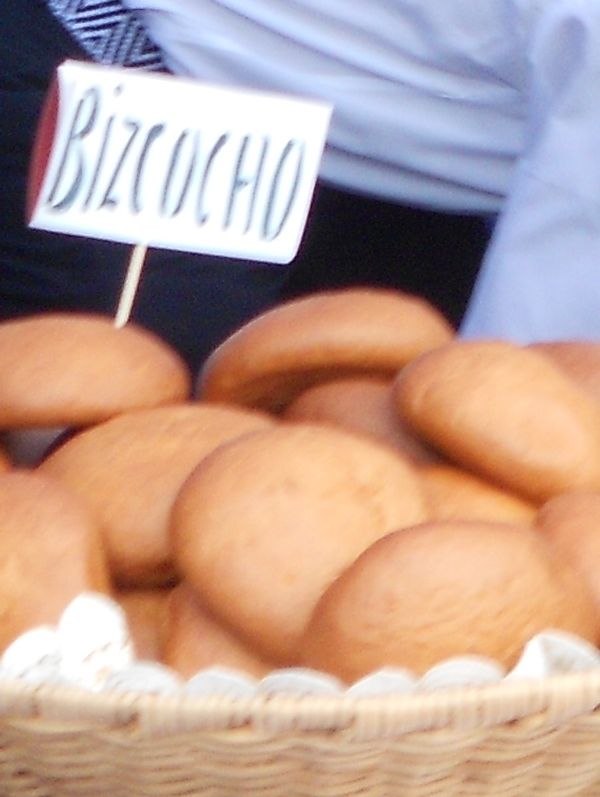
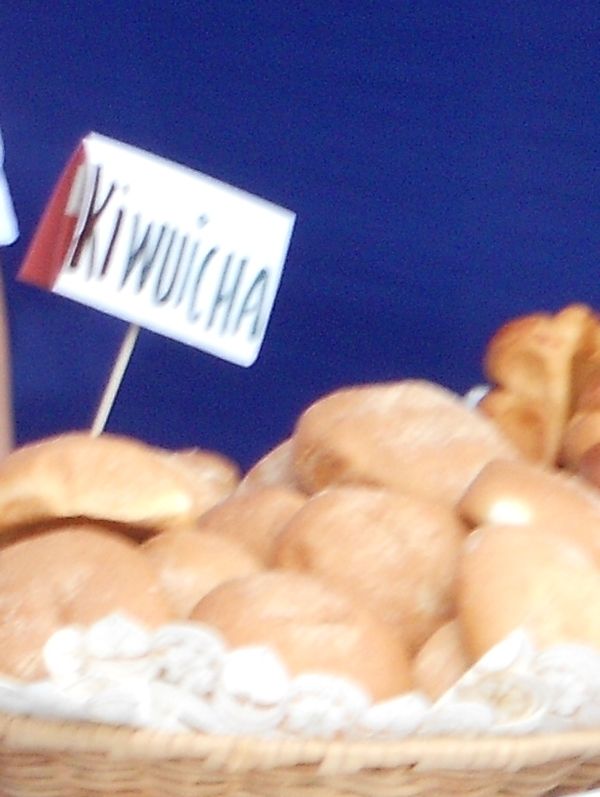
Click to enlarge.
We're on Facebook too!
English version.
Encuentre la versión en español AQUÍ.

Map HERE
MYSKI TANTA

- What’s your name, please?
- Vides Michael Aylas Martínez.
- Vides, how does the Myski Tanta bakery start?
- Myski Tanta starts three years ago. I gave it that name because, in Quechua, it means ‘sweet bread’.
- And is your bread really sweet?
- ¡Of course! They’re all sweet.
- Sounds great. So what do you use for production, what are the ingredients in your bread?
- They have wheat flour. We work with barley flour, and also quinua flour. Kiwicha, kañiwa… lots of ingredients. We make the bread mainly with our Andean grains.
- And where are you from, exactly?
- We are from Jauja. Jauja - Junín.


- What’s your star product, Vides?
- The ‘maicillo’. They are little biscuits made with corn flour, 100% corn flour.
- And how did you come to take part of this event?
- Well, I heard about it. So I sent my e-mail, and that was that.
- And what do you think so far?
- I think it’s cool that people show an interest in bread.
- Very well. An invitation for Sunday?
- I invite everybody, that they come to the Misky Tanta stand here; they’d find quinua bread, and barley bread… Lots of bread!



Click to enlarge.
CHACHAPOYAS BREAD

- All of you are representing…?
- I come from Chachapoyas, from the San Jose bakery.
- Ah, from Chachapoyas up north! I could tell from the hat.
- Yes, indeed. From the border with Ecuador.
- How did you get to be here, tell me.
- It was two days of travel. And we came with the bread from there, from my region.
- When did San Jose start?
- San José is already… since ’83! And it’s one of the emblematic bakeries because of its participation here in the capital city; we've been national champions since 2003, with our arracacha bread. And in 2004, too, with another bread: corn bread, which is not here this weekend.
Also, Mrs. María is well known, a distinguished bread baker at Mistura in four consecutive years. It’s just our first time at this particular event.
(a visitor came to greet Mrs. María and the others.)


- I see you have interesting acquaintances.
- Well, it’s the bread business… I follow Mrs. María in this important work, because bread is a symbol of world nutrition. These events, these fairs, are very important because Peru is not a bit bread consumer - we don’t even reach the recommendation from the World Health Organization, which is 60 kg every year, per person. Instead, in Peru, it’s about 19 kg; we still need more bread on our tables.
Also, for us it’s an honor to be here.
- I see. Now, I have to ask. You mentioned that your arracacha bread was the winner in 2003. Tell me more about this bread.


Click to enlarge.
- The arracacha is that root vegetable in the front, similar to the sweet potato; grows in the soil. We process it: we cook it - boil it, really. Once pre-cooked, we mix it with the flour, and that’s how the bread is made.
This time we are bringing five different breads. One is already gone - so quick! It was a whole wheat bread. There’s also the ‘semita’, which to me represents Peruvian bread. Why? Peru has many varieties of bread, but it occurs to me that when the Spaniards came to Perú, they wanted to eat food from their own land. And, look, the ‘semita’ has absolutely nothing to do with the Chacha culture - it must come from the Spaniards, and they were conquered by Turks, Arabs… Anyway, they had their own bread.
Nowadays, this is a commonplace bread in Chachapoyas; it can be found in markets, in bakeries. It’s not a bread that is prepared for a special celebration, not anymore. Before, yes, it was made to honor important guests, or for weddings. The ‘semita’ is a fine bread - or a ‘special bread’, as it’s called here in the Coast - because it’s a mixture of two doughs. That’s what makes it special.

Click to enlarge.
- What kind of doughs?
- One is sweet, like sweet bread. And on top comes the wheat one. And that combination, those doughs, give their main characteristic to the ‘semita’ bread.
- Interesting. I’d never heard of it. Now, an invitation for Sunday?
- Well… Even more than the general public, I’d like to invite all fellow bread bakers. They should know about this event, and come here because ours is good stuff. And it’s good for them to know it all. Here, many of us have come from inside the country, and we need that Peru realizes what we have in our provinces. Lima is a good market for this, to make us known by everybody.
And to the others who are reading this, well, that they attend this fair. Come on Saturday and Sunday. We will show them, and they’ll be able to taste the products we have brought.


Click to enlarge.
We're on Facebook too!